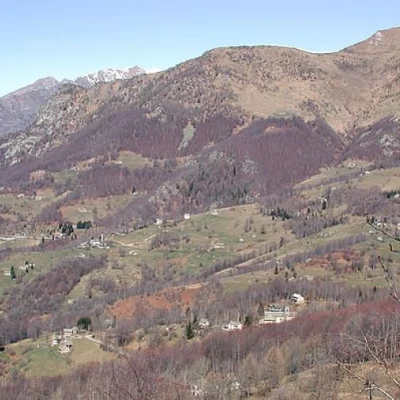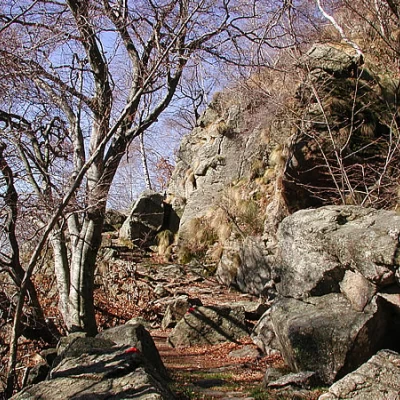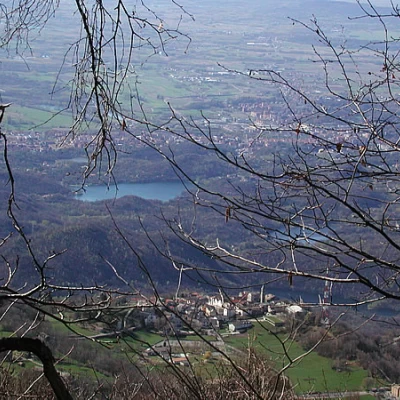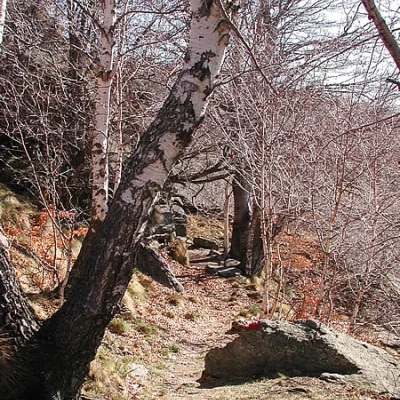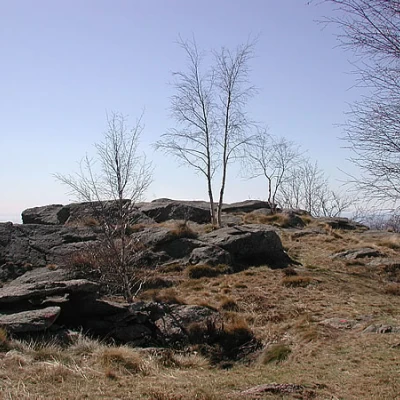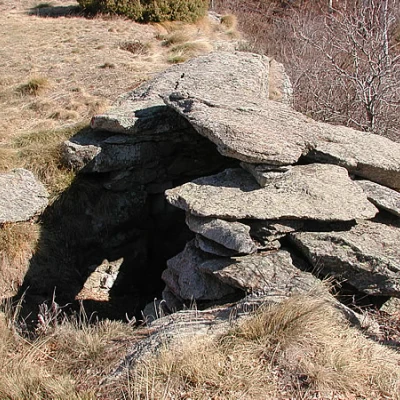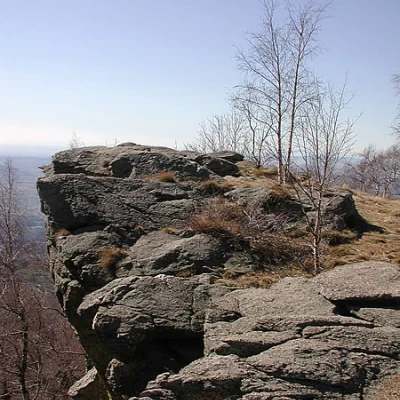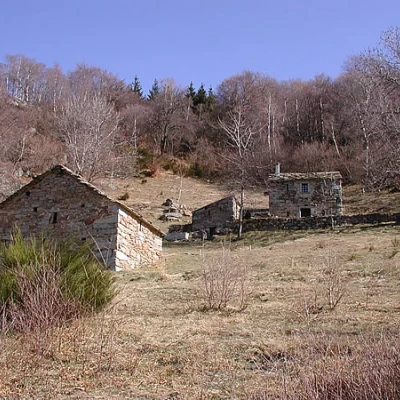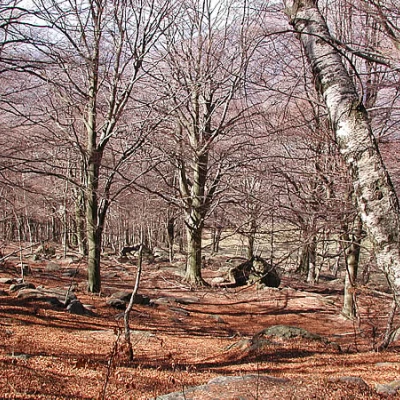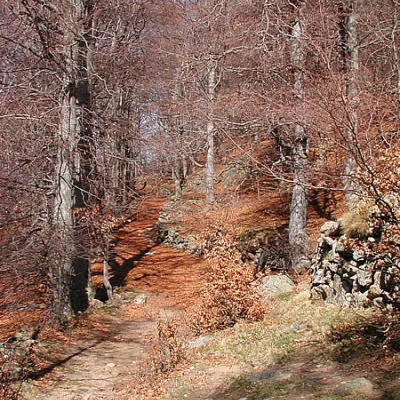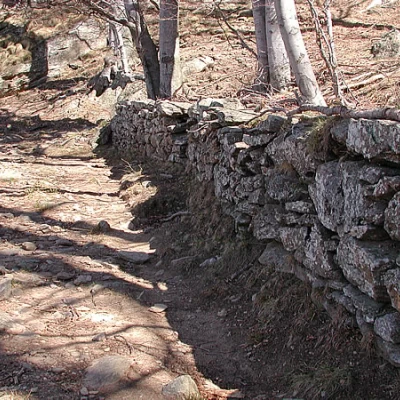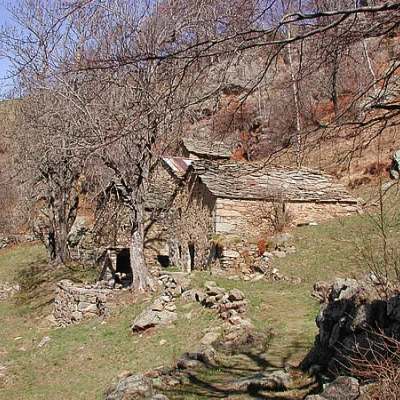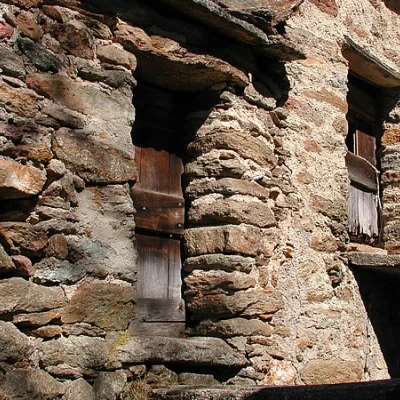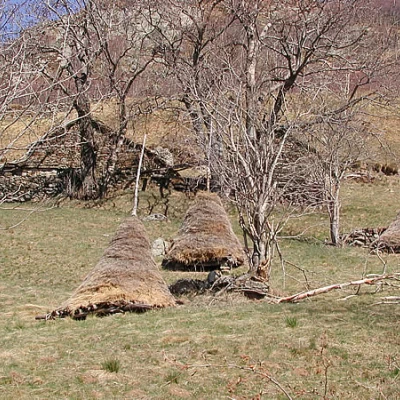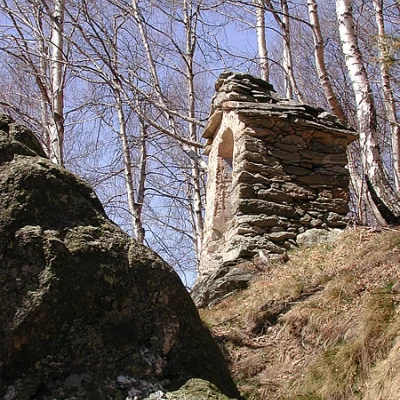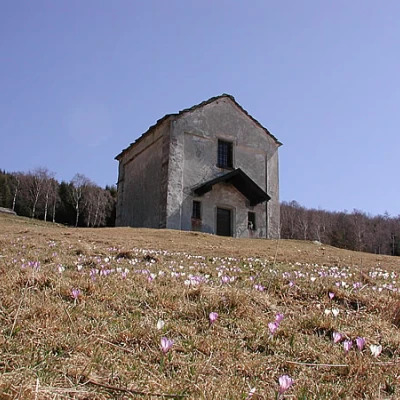Trovinasse, from St James
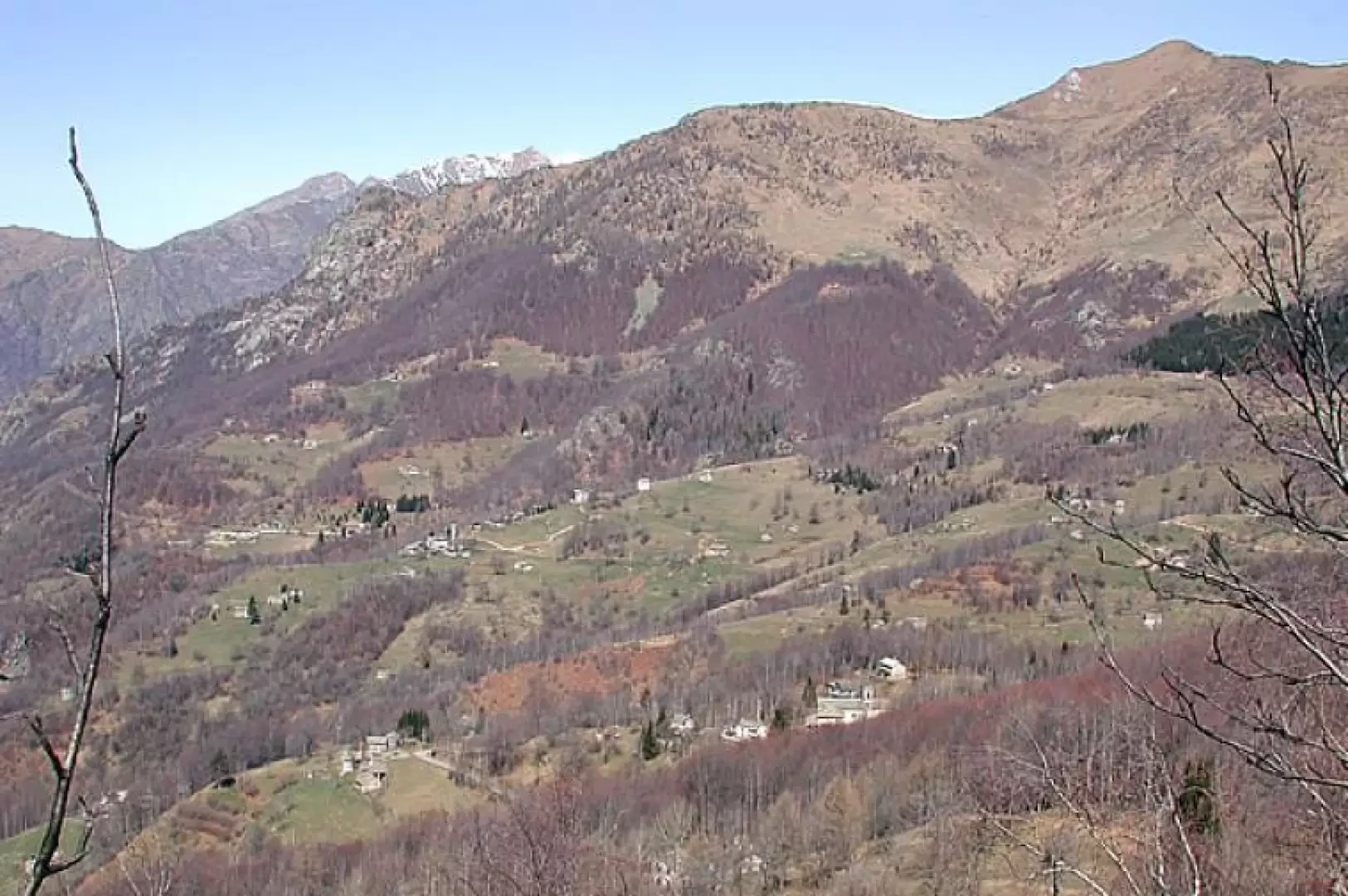
Introduction
Circular route facing west, with a beautiful view of the Canavese mountains and the countless moraine lakes below. You pass by the little church of Corma degli Ordieri and along the beautiful mule tracks that connected the alpine pastures, among birch and beech woods and wide pastures, you reach Trovinasse, at the foot of the valley that leads to Mombarone and the Lace pass.
Description
Leaving the car (1270 m), continue along the asphalt road from which you arrived, ignoring two deviations to the left with no-entry signs and continuing until you find, still to the left, an old signpost in front of a farmstead closed off with a bar: on the signpost is the indication Trovinasse and the red-and-white sign that will accompany us along the route. Walk along the tarmac road to a small clearing; the path begins on the right. The clearing to the left ends at some huge rocks, overlooking the forest below; the configuration of this place suggests, according to some scholars I questioned intrigued by the singularity of the site, that it may be a megalithic altar. Near a betullina, at the highest point, there is a flat stone with a rectangular basin carved out of it, on other stones further up a pair of cup-marks are visible, and to the left there is a shelter covered with slates with a rectangular window. If it was indeed a megalithic place of worship, with the sacrificial altar and the dolmen room, it could be dated around the third millennium BC. Incidentally, looking at the photograph of the outline of the rocks, I realised that the silhouette is that of the head of a snake...Chance?!?!? Or have the stones been slightly modified to give them this appearance?!?! There is only one reference to this place in Scarzella's book, which mentions the rectangular basin, but calls the dolmen room a probable animal shelter, which is implausible because it is too small, in a strange position, and far from any other human construction. After having imagined for a moment our ancestors performing their rituals in this place, which is, moreover, very suggestive and with a spectacular view of the plain below, we continue on the little path to the right, entering the beautiful forest. We ascend among the trees, cross a beautiful stretch with many rhododendron bushes, until we come to another beech forest, very open, and beyond this to the Corma degli Ordieri, a very wide pastureland with a chapel in the middle, which in spring has the meadow in front carpeted with snowdrops. The route continues on a path that is very wide in places, passing beautiful huts, and others that are now destroyed, pastures, dry stone walls, springs, and a couple of small chapels dedicated to the Madonna of Oropa, whose devotion is very much alive in the Canavese area. The last part of the route is among birch trees and takes us to the San Giacomo-Trovinasse road at 1555 m. The road is forbidden to transit, only passable by those who have mountain pastures in the area, and is in places unpaved and in others asphalted. Immediately after the bend, a steep path through the pine forest descends to Trovinasse at 1370 metres, with its church (2 hours from San Giacomo). For the return journey, I advise you to take the inter-pasture road; it offers interesting views of Mombarone and the Trovinasse basin, and passes by other mountain huts. When you find yourself back at Corma degli Ordieri, it is best to descend through the meadow to the little church and take the outward path again, which is more interesting than the road (1h 30' from Trovinasse). At San Giacomo there is an old church that is worth a look.
.